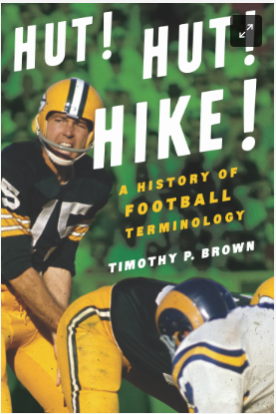The game of baseball has a long and storied history of its players, teams and managers. The stats, the championships, pitching duels and so much more make this one of the most interesting items to study and watch.
Sports History
Roberto Alomar's Baseball Hall of Fame Journey
His journey began with the San Diego Padres, but he truly shone with the Toronto Blue Jays. From 1991 to 1995, Alomar helped lead the team to back-to-back World Series championships, dazzling fans with his clutch hitting (.313 postseason average) and acrobatic defense. He formed a legendary double-play combination with Omar Vizquel, their synchronicity a joy to watch.
Individual accolades: 12 All-Star selections, four Silver Slugger Awards, and an American League Championship Series MVP award. Beyond statistics, Alomar was a leader, captivating audiences with his passion and energy.
However, his brilliance was marred by controversy. A 1996 incident led to his suspension, casting a shadow over his achievements. He bounced back with solid seasons with the Cleveland Indians and New York Mets, but the controversy lingered.
Despite the complexities, Alomar's impact on the game is undeniable. He revolutionized how second base was played, inspiring a generation of defenders with grace and agility. His clutch hitting and leadership helped teams reach the pinnacle of success.
In 2011, baseball finally recognized his on-field contributions, inducting him into the Hall of Fame.
Photograph by Jon Gudorf.
Carl Yastrzemski HOF Baseball Slugger
Yastrzemski's path to baseball stardom began in 1961. At the age of 21, he stepped onto the field for the Red Sox, a team mired in a championship drought. His impact was immediate. He displayed a potent combination of power hitting, exceptional batting average consistency, and a keen eye at the plate, winning the American League Rookie of the Year award.
Yastrzemski wasn't a one-dimensional slugger. He possessed exceptional speed on the basepaths, stealing over 300 bases throughout his career. His defensive prowess was equally impressive. He could play various outfield positions with ease, showcasing a strong arm and a knack for making acrobatic catches.
The biographical sketch on the life and Baseball Hall of Fame career of Carl Yastrzemski. Carl Yastrzemski played the position of Left Fielder, First Baseman, Center Fielder, Third Baseman, and Right Fielder wearing the number 8 on the Boston Red Sox (1961-83) for 23 seasons as he batted 0.285 for his career, had an On Base percentage of 0.462, with 452 career Home Runs, and 7 Gold Glove Awarded Seasons. Yas is one of the top MLB players to have worn the Number 8 Jersey and perhaps one of the greatest MLB players ever.
Brooks Robinson Baltimore Oriole Star
Early Career and Rising Star (1955-1959):
-Debuted with the Orioles at just 18, showcasing his exceptional athleticism and fielding prowess from the start.
-Earned his first Gold Glove Award in 1960, marking the beginning of an unprecedented streak.
Unparalleled Defensive Mastery (1960-1976):
-Won a staggering 16 consecutive Gold Glove Awards at third base, an unbreakable record in Major League Baseball.
-Renowned for his exceptional range, agility, and a seemingly magnetic glove, earning him the nickname "The Human Vacuum Cleaner."
-Holds numerous defensive records, including most games played at third base (2,870) and most assists by any position (6,205).
Offensive Contributions:
-While primarily known for his defense, Robinson also compiled a respectable offensive career.
-Batted .267 over his 23-year career, hitting 268 home runs and driving in 1,357 runs.
-Played a key role in the Orioles' success, reaching the postseason six times, including the 1966 World Series.
Legacy:
-Inducted into the Baseball Hall of Fame in 1983, becoming the first third baseman elected in his first year of eligibility.
-Recognized as one of the greatest defensive players in baseball history, inspiring generations of young athletes with his dedication and work ethic.
-More than just statistics, Robinson personified the grit, resilience, and passion that have come to define the Baltimore Orioles organization.
Born May 18, 1937, in Little Rock, Arkansas, was Harold Baines, the first overall pick in the 1977 MLB Draft, MLB player Brooks Robinson.
Robinson played the positions of Third Baseman, Second Baseman, and Shortstop wearing the number 5 on the Baltimore Orioles (1957-77) for 21 seasons. He batted 0.267 for his career, had an On Base percentage of 0.401, with 268 career Home Runs, and 16 Gold Glove Awarded Seasons. Brooks is one of the Top Baseball Jersey Number 5s in History.
Carl Hubbell Hot Hand on the NY Giants Mound
Hubbell's journey to baseball stardom wasn't smooth. Initially discouraged from using his screwball due to fears of injury, he eventually found a home with the New York Giants. There, his unique delivery and pinpoint accuracy blossomed. The screwball, a pitch that dipped away from right-handed hitters, became his weapon of choice, leaving batters bewildered and frustrated.
Hubbell's dominance wasn't limited to a single pitch. His fastball was electric, his curveball sharp, and his control impeccable. He possessed an uncanny ability to locate his pitches, painting the corners of the strike zone with unnerving precision. This mastery translated into results: three National League ERA titles, two National League MVP awards, and a staggering .622 winning percentage across his career.
One of Hubbell's defining moments came in the 1934 All-Star Game. Facing a legendary lineup of National League hitters, including Babe Ruth, Lou Gehrig, and Jimmie Foxx, Hubbell struck out all nine batters in a row. This feat, unmatched for decades, cemented his reputation as a magician on the mound, capable of bending hitters to his will.
Hubbell's career wasn't without challenges. He pitched during the "Live-Ball Era," when offensive firepower ruled the game. Yet, even in this offensive climate, he managed to maintain an impressive sub-3.00 ERA throughout his career. Additionally, injuries and World War II limited his prime years.
Born June 22, 1903, in Carthage, Missouri, was Baseball Hall of Fame pitcher, Carl Hubbell. Carl was a nine-time MLB All-Star; was on the 1933 World Series Champion New York Giants and in fact won the NL MVP in 1933 and in 1936. Hubbell played for the New York Giants of the National League from 1928 to 1943, and remained on the team's payroll for the rest of his life, long after their move to San Francisco. Carl's accomplishments include setting the major league record for consecutive wins by a pitcher with 24. He used his famous screwball during the 1934 All-Star Game, when he struck out five future Hall of Famers – Babe Ruth, Lou Gehrig, Jimmie Foxx, Al Simmons and Joe Cronin – in succession.
Yogi Berra Baseball Icon and Master of the "Yogi-ism"
Yogi Berra, born Lorenzo Pietro Berra in 1925, transcended the boundaries of baseball, becoming a household name and cultural icon. His 19-year career, spent primarily with the New York Yankees, established him as one of the greatest catchers in baseball history, while his unique quips, known as "Yogi-isms," cemented his place in popular culture.
A Clutch Hitter and Masterful Defender:
Berra's baseball journey began in the minor leagues, where he quickly gained recognition for his potent bat and exceptional defensive skills behind the plate. He made his major league debut with the Yankees in 1946, quickly establishing himself as a force to be reckoned with.
Throughout his career, Berra displayed a remarkable consistency, batting over .300 in ten seasons and leading the American League in on-base percentage four times. He was a crucial component of the Yankees' dynasty, contributing to ten World Series championships during his tenure.
But Berra wasn't just a prolific hitter; he was also a defensive stalwart. He won three Gold Glove Awards for his defensive prowess and is widely considered one of the best defensive catchers of all time. His ability to handle a pitching staff and manage the game from behind the plate was invaluable to the Yankees' success.
Hoyt Wilhelm
Joe Medwick - Cardinals HOF Outfielder
Medwick is one of the top MLB players who wore the Number 7 Jersey.
Biz Mackey Star Catcher
Mackey wasn't just a defensive stalwart; his bat spoke volumes too. A switch-hitter known for his line drives, he consistently hit above .300, placing him among the Negro Leagues' all-time greats. His power was undeniable – he racked up RBIs and boasted a high slugging percentage.
Praised by fellow Hall of Famers for his complete package of skills – hitting, throwing, and game smarts – Mackey was a catcher that pitchers loved to work with. His contemporaries even ranked him above the legendary Josh Gibson as the best catcher they ever saw.
Despite a long and remarkable career, Mackey's accomplishments went largely unrecognized for decades due to segregation. However, in 2006, he received his due credit with an induction into the National Baseball Hall of Fame.
Born July 27, 1897, in Eagle Pass, Texas, was Baseball Hall of Fame Catcher Biz Mackey. He was a five-time East-West All-Star Game roster invite and a member of the Negro League World Series 1925 Champion Hilldale Daisies, and in 1946 on the Newark Eagles title team.
For his career he was a member of the Indianapolis ABCs (1920–1922), New York Lincoln Giants (1920), Hilldale Daisies (1923–1931), Philadelphia Royal Giants (1925), Philadelphia Stars (1933–1935), Washington / Baltimore Elite Giants (1936–1939), and Newark Dodgers/Eagles (1935, 1939–1941, 1945–1947, 1950). Mackey was regarded as black baseball's premier catcher in the late 1920s and early 1930s.
Gary Carter Catcher for the Ages
Baseball purists revere him, and fans remember the thunder of his bat. Gary Carter, nicknamed "The Kid" for his youthful exuberance throughout his long career, was a cornerstone catcher not just for the New York Mets, but for the entire game. This article delves into the life and legacy of this iconic figure, exploring his defensive mastery, clutch hitting, and the impact he left on the sport he loved.
A great YouTube video of Gary Carter's MLB highlights. Born April 8, 1954, in Culver City, CA, was Baseball Hall of Fame catcher Gary Carter.
Gary Carter besides Catcher played a bit of Right Field, First Base, Left Field, and Third Base, wearing the number 8 on the Montreal Expos (1975-84 and 1992), New York Mets (1985-89), San Francisco Giants (1990), and Los Angeles Dodgers (1991) for 18 seasons as he batted 0.262 for his career, had an On Base percentage of 0.439, with 324 career Home Runs, and 3 Gold Glove Awarded Seasons.
He is one of the top MLB players that ever wore the Number 8 Jersey.
Buck Leonard Early Baseball Star
Buck Leonard, a legend of the Negro Leagues, carved out a remarkable career as a first baseman. Here's a glimpse into his achievements:
-Dominant Hitter: Renowned for his smooth swing and exceptional hitting skills, Leonard boasted a career batting average of .346, a staggering number for any league.
-Homestead Grays Icon: He spent his entire 17-year Negro League career (a record for a single team) with the powerhouse Homestead Grays.
-Championship Pedigree: During his tenure with the Grays, Leonard played a pivotal role in their nine consecutive Negro National League championships and their victories in two Negro World Series.
-Teammate of Legends: Batting cleanup behind the iconic slugger Josh Gibson, Leonard formed a legendary offensive duo known as the "Thunder Twins."
-Enduring Legacy: Despite his immense talent, Leonard never got the chance to play in Major League Baseball due to racial segregation. However, his achievements in the Negro Leagues earned him a well-deserved place in the National Baseball Hall of Fame in 1972.
Sadly, Leonard never played in Major League Baseball, as he declined a 1952 offer of an MLB contract because he felt he was too old.
February 7 Jersey Numbers

Here are some jersey numbers in team sport history that stuck out. February 7, 1949 - Number 5, Joe DiMaggio became the first ball player to earn $100,000 a yearas he did so under contract with the New York Yankees . February 7, 1958 - The Brooklyn Dodgers official...
- The use of a "banner" counts as 10 words!
February 6 Jersey Numbers
Sports history is made every day of the year. We will preserve at least a small sampling from some great athletes every day based on the uniform number they wore. 31 - 9 - 14 - 83 - 7 - 16 - 22 - 80 - 11 - 84 - 10 - 83 - 12 February 6, 1926 - St Louis Browns acquire catcher Wally Schang from ...
February 5 Jersey Numbers

Here is what happened in Sports Jersey History on February 5: Kareem hits a new NBA high, Hines hauls in a big one and Bob Douglas is honored. Our Sports Jersey Take of the Day is from historian Joe Ziemba. Listen in to learn more about sports history along with me from the unif...
- The use of a "banner" counts as 10 words!
The Oregon Agricultural Hard Court Stars
(image) Members of the 1922 Oregon Agricultural College men's basketball team. From left to rightː Gill (forward), Hjeite (enter), and Feraley (forward), from February 5, 1922. This image is courtesy of Wikimedia Commons. We know the OAC by a different name today, Oregon State. The Oregon Ag...
The 1897 Strathcona Hockey Team
.jpg?https://jerseydispatch.com/pfeL/p/c312642c0431e75b485e432232c99c1c/website/Sports-History-Photo-of-the-Day/February-Images/February-4-Image/images/.Strathconas_First_Hockey_Team_(21879505322).jpg)
Formal portrait of Strathcona's First Hockey Team (1897). Stratchcona resides in British Columbian Province, and is the oldest residential neighbourhood of Vancouver, (image) Some players are labeled by number. 1. Bob Blain 2. Jim Blain 3. Billy Sharkles 4. Fred Richards 5. J. McIn...
- The use of a "banner" counts as 10 words!
February 4 Jersey Numbers

Here is what happened in Sports Jersey History on February 4 : We talk about the great goaltending of Grant Fuhr and Ray Durbin of Row One Brand stops by to to discuss two of his favorite number 40s. Listen in to learn more about sports history along with me from the uniforms and jers...
- The use of a "banner" counts as 10 words!






